Meeting notes by Andrew Roberts
A large group of members visited Anstey Hall on the evening of 22 May 2025. We are very grateful to John de Bruyne for talking to us and showing us some of the highlights of rooms and furnishings within the Hall.
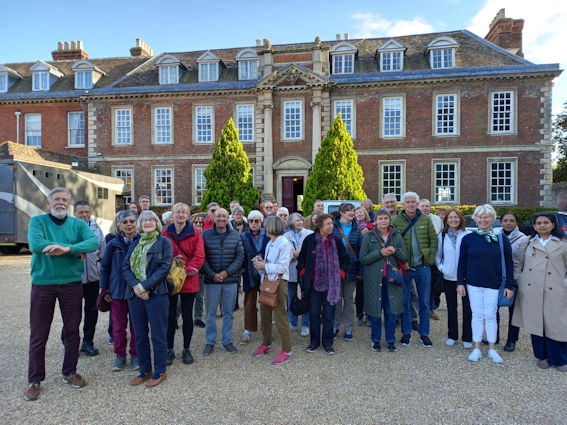
We met in the courtyard in front of the Hall. Andrew Roberts welcomed the group and handed over to John de Bruyne.
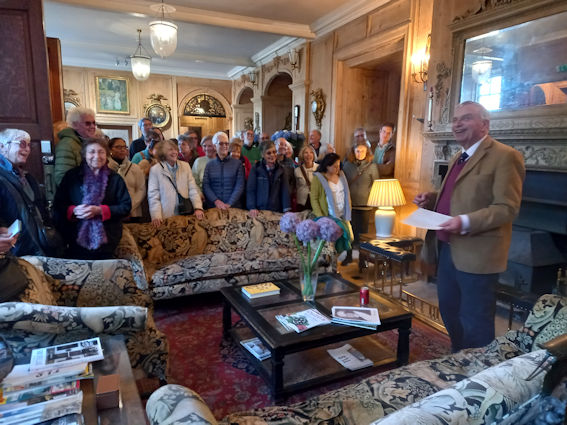

John invited us into the main reception hall and gave us a brief introduction to the history of Anstey Hall. There may have been a manor house on the site from the Domesday period, 1068, the manor of Picot, the Sheriff of Cambridge. The current building was built for James Thompson c. 1670s. After the death of a later James Thompson in 1721, it eventually passed into the Anstey family in 1748, with Christopher Anstey married to Mary Thompson (who John described as ‘The Peach of Trumpington’). Their son, also Christopher Anstey, lived here and in Bath, where he was the famed author of the New Bath Guide (1766). In 1838, the Hall was purchased by the Foster family, who remained the owners until 1941. John added that the history of the Hall would have been very different if it had been purchased by the Pemberton family in 1838. The Foster family were bankers and John mentioned finding a collection of their papers at a solicitor’s office. In the mid-1800s, the Hall was rented to Robert Ellis, a mathematician and classical scholar who developed the 4-colour theory.
John had been born in Duxford and knew of the Hall when it was used as government offices, when he said that it was in an awful state. John mentioned that he and Antony Pemberton had overlapped at Eton College, another one of his early connections to Trumpington. When the Hall was put up for sale in 1998, there was a sealed-bid tender process, with Savills estate agents acting for the owner. John came to the opening of the bids and was very pleased to be the successful bidder. John said that his mother’s family were Quakers and his godfather was Sir Arthur Marshall. He learned to fly and flew from Shoreham to Cambridge for the opening of the bids. When he bought the Hall it had a Grade I listing, which he persuaded Historic England (English Heritage) to reduce to Grade II*. There was extensive use of green paint from the period as government offices. He carried out renovations, including installing wooden panelling.
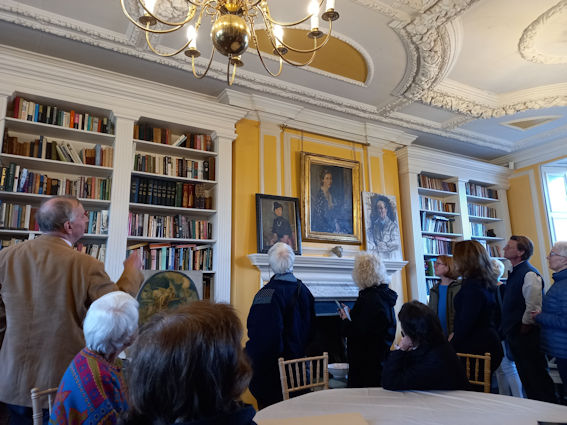
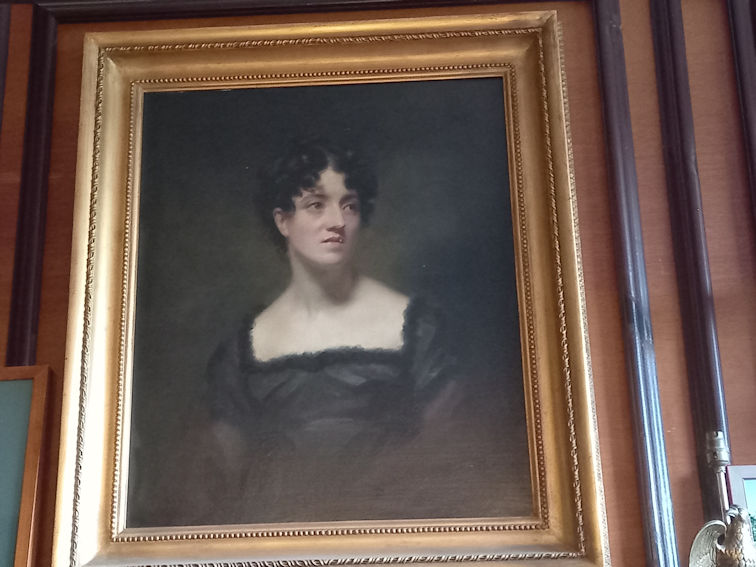
We moved into the Library, with shelving and panelling, a reproduction ceiling and further portraits. John had clearly been very close to his mother, with a number of paintings of her and other members of his family in the rooms. His father, Dr Norman de Bruyne, had developed the Araldite adhesive. John mentioned his period as owner of Swaine Adeney Brigg. He had taken it over when its factory in Great Chesterford was in difficulties. The firm made leather work, with a central London shop near Fortnum and Masons, later in Old Bond Street. In this period, he had close contacts with members of the Royal Family and other leading society figures. The firm had three Royal Warrants: umbrella maker to the Queen Mother; whip maker to the late Queen; and leather maker to the then Prince Charles. There was a cabinet in the hall with samples of Swaine whips. The company sold the hats which Steven Spielberg commissioned to be worn by Harrison Ford in Raiders of the Lost Ark. Brigg made the black umbrella that Neville Chamberlain carried while Prime Minister, including when returning to London after meeting Hitler in 1938, an umbrella which Sir David Cannadine writes “was intended to project an image of the quintessential Englishman, who was always smart, prepared and, in a manner of speaking, neatly furled.”.
We returned to the entrance hall, where John had a story about a visit to the Hall by King George V, who had driven to Cambridge to see his son and came to the Hall without prior arrangement. The Foster family had gone to Balmoral for a shoot and the King was welcomed by the gardener, who provided tea in the garden. The Fosters never recovered from the disappointment of missing the King!
We moved into the Saloon Bar, lined with walnut panelling. Another room had a portrait by Raeburn of one of John’s ancestors, Catherine Melville. John currently has a planning application to develop apartments in the grounds of the Hall, which has gone to appeal. If the application is approved, John mentioned that he would like to open the Hall up to visitors. It had been operating as a hotel, but this is no longer the case.
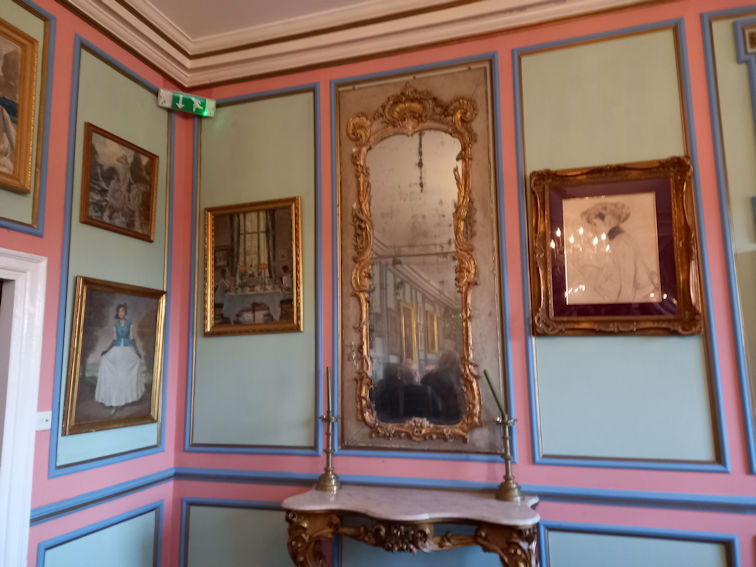
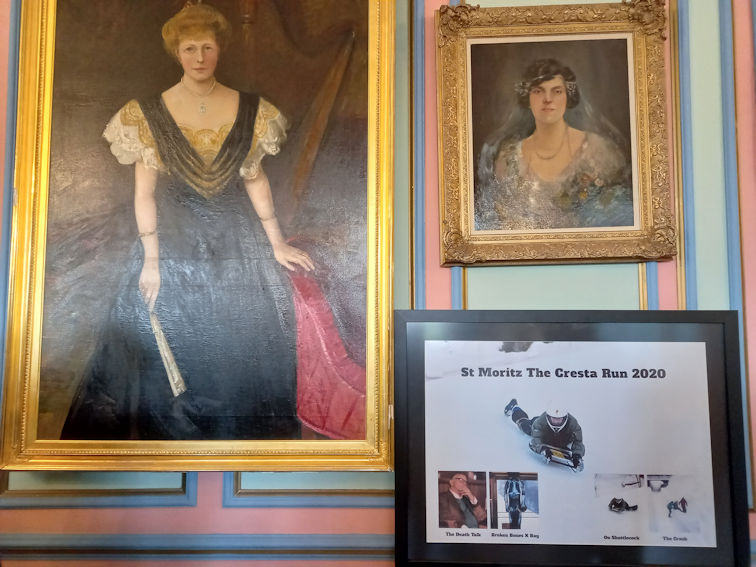
We continued upstairs, into a large Ballroom, with Murano glass chandeliers and more grand portraits. There was a memento of the Cresta Run, and John said he had completed this in 2020 and planned to do it again in 2026! We continued to a bedroom, which John said had featured in one of the ‘Four in a Bed’ television programmes.
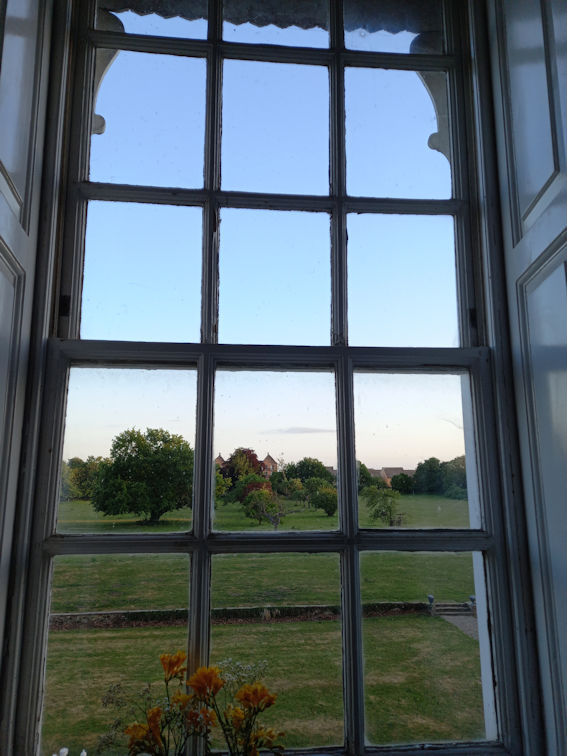
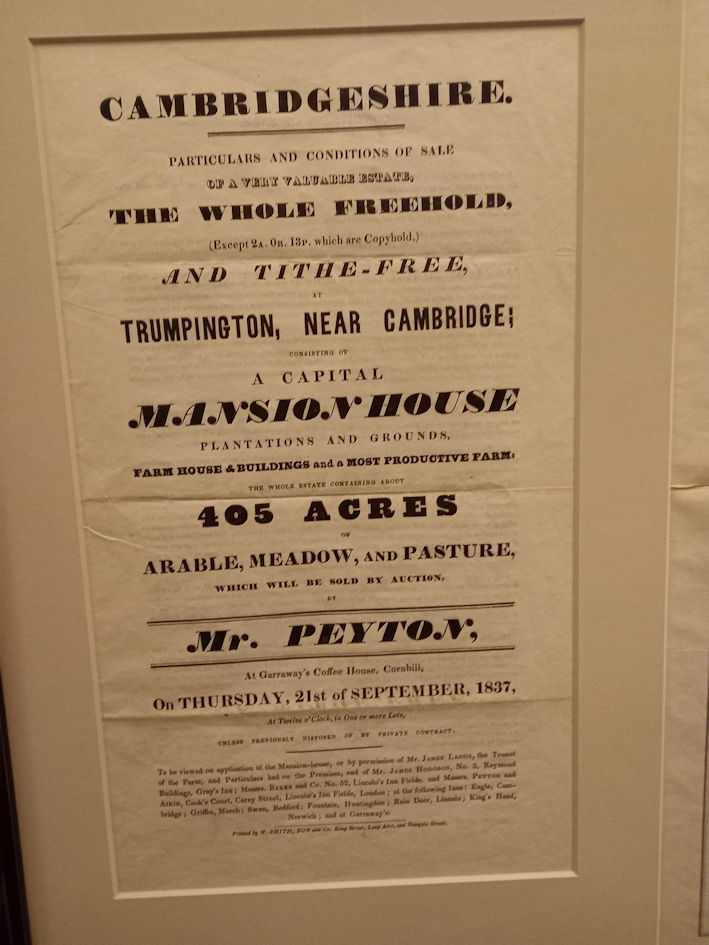
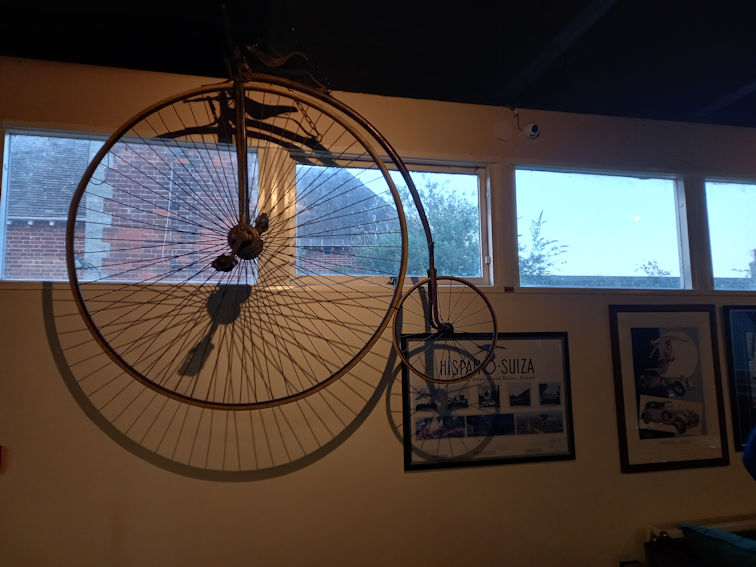
We had good views over the grounds as we walked back downstairs and continued along a passageway to a kitchen, with a copy of the 1837 sale particulars for the Hall and Estate and further curiosities.
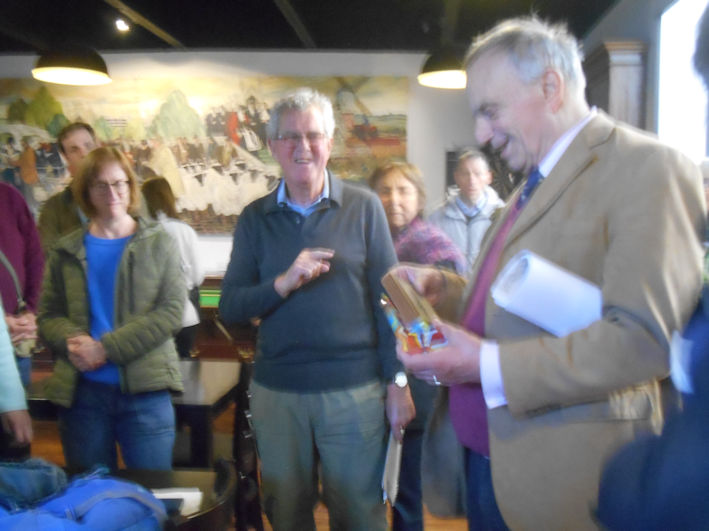
Andrew Roberts closed the meeting, with our thanks to John for a fascinating evening.
We last visited the Hall on 15 May 2012 and there is a report on that visit, with further information about the history of the building.